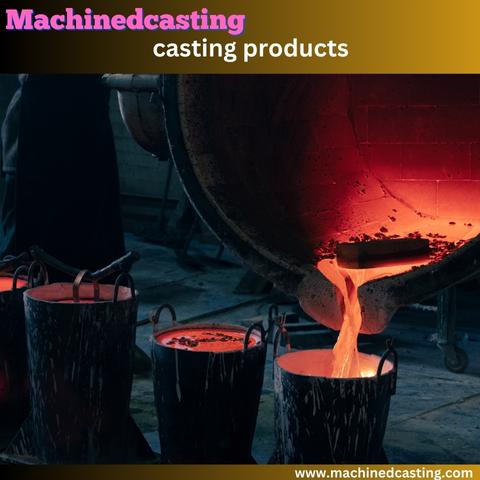Casting products involves the intricate process of shaping molten material into a desired form. From metals to plastics, the casting method is widely used across various industries like automotive, aerospace, jewelry making, and more. Achieving precision and quality in casting demands a meticulous approach. This guide aims to elucidate the steps involved, the types of casting products methods available, and essential tips for successful product casting.
Types of Casting Methods:
-
Sand Casting: One of the oldest and most versatile methods, casting products involves creating a mold by compacting sand around a pattern. Molten metal is then poured into the mold cavity and left to cool and solidify. This method suits both simple and intricate designs.
-
Investment Casting: Ideal for intricate designs, this method employs a wax pattern encased in a ceramic mold. Once heated, the wax melts, leaving a cavity to pour in the molten material. This process offers exceptional detail and surface finish.
-
Die Casting: Commonly used for mass production of small to medium-sized parts with high accuracy. Molten metal is injected into a steel mold (die) under high pressure, resulting in fast production cycles and fine surface finishes.
-
Centrifugal Casting: Employed for cylindrical or symmetrical parts, centrifugal force is used to distribute molten metal into a spinning mold, ensuring even distribution and eliminating impurities.
Steps for Successful Product Casting:
-
Design and Prototyping: Create a detailed design and a prototype to visualize the final product. Consider material properties, shrinkage rates, and manufacturing feasibility during the design phase.
-
Material Selection: Choose the appropriate material based on the product's function, durability, and required properties like strength, heat resistance, or conductivity.
-
Mold Preparation: Depending on the casting method, prepare the mold or die meticulously to ensure it can withstand the molten material and retain the desired shape.
-
Melting and Pouring: Follow precise heating instructions for the chosen material. Pour molten material into the mold cautiously, ensuring it fills all cavities without introducing air bubbles or impurities.
-
Cooling and Finishing: Allow the cast product to cool naturally or using controlled cooling methods. Post-casting, remove excess material, perform necessary treatments (heat treatments, surface finishes), and inspect for defects.
Tips for Enhanced Casting:
- Maintain proper temperature and humidity in the casting area to prevent material contamination.
- Implement quality control measures at each stage to identify and rectify defects promptly.
- Train personnel thoroughly in safety protocols and casting techniques to minimize accidents and errors.
Conclusion: Mastering the art of casting products involves a blend of expertise, precision, and attention to detail. By understanding the methods, following precise steps, and adhering to best practices, achieving successful product casts becomes a feasible and rewarding endeavor across diverse industries.


No comments yet